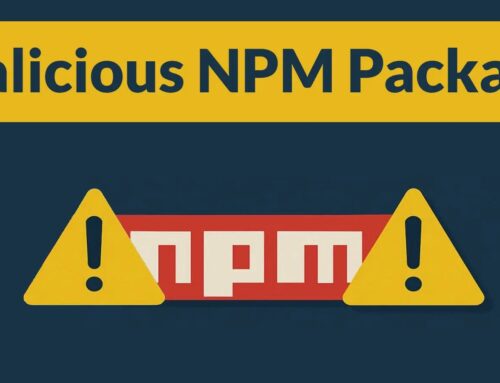
New Malware Targeting WooCommerce Sites with Malicious Plugins Steals Credit Card Data
Urgent Warning: New Malware Campaign Targets WooCommerce Stores, Stealing Credit Card Data via Malicious Plugins
E-commerce security is under a direct and sophisticated assault. A newly identified malware campaign is actively targeting WordPress websites utilizing the popular WooCommerce plugin, specifically aiming to harvest sensitive credit card information from customer transactions. Discovered in August 2025, this threat is not just another piece of malicious code; it exhibits advanced evasion tactics and a multi-tiered credit card harvesting mechanism designed to bypass even robust security measures. This detailed analysis will dissect the threat, explain its operational methods, and provide critical remediation steps for affected and at-risk organizations.
The Threat Unveiled: How Malicious WooCommerce Plugins Operate
The core of this new campaign lies in its ability to masquerade as a legitimate WordPress plugin. Once infiltrated, this rogue plugin deploys a sophisticated credit card skimmer. This isn’t a simple data capture; the malware employs custom encryption to obscure its activities, making traditional signature-based detection challenging. Its advanced evasion capabilities mean it can often operate undetected for extended periods, silently siphoning off valuable customer payment data. Organizations relying on WooCommerce for processing online payments are particularly vulnerable, as the compromise directly impacts the transaction flow. The malware’s design indicates a significant effort to maintain persistence and avoid detection, demonstrating a high level of attacker sophistication.
Advanced Evasion Techniques and Multi-Tiered Data Harvesting
What sets this malware apart is its strategic approach to both evasion and data exfiltration. The custom encryption used by the malicious plugin is a key component of its stealth. By encrypting its communications and stolen data, it significantly complicates analysis and prevents easy identification by standard network intrusion detection systems. Furthermore, the “multi-tiered credit card harvesting mechanisms” suggest that the attackers have built redundancies into their data theft process. This could involve storing stolen data in multiple locations, using various exfiltration channels, or employing different encryption keys for different stages of the data transfer. This layered approach increases the likelihood of successful data theft even if one exfiltration attempt is blocked. The primary target, credit card data, includes card numbers, expiration dates, and CVVs, making successful breaches incredibly damaging for both businesses and their customers.
Remediation Actions: Protecting Your WooCommerce Store
Immediate action is crucial for any WooCommerce site administrator. Proactive measures are the best defense against such sophisticated threats. Here are actionable steps to mitigate the risk and respond to a potential compromise:
- Regular Security Audits: Conduct frequent and thorough security audits of your entire WordPress installation, including all installed plugins and themes. Look for unauthorized file changes, suspicious user accounts, and unexpected process activity.
- Plugin and Theme Management:
- Uninstall Unused Plugins/Themes: Remove any plugins or themes that are not actively in use. Each installed component represents a potential attack surface.
- Source Verification: Only install plugins and themes from trusted developers and reputable marketplaces. Avoid nulled or pirated versions, which are often pre-packed with malware.
- Regular Updates: Keep all WordPress core files, themes, and plugins updated to their latest versions. Developers frequently release patches for known vulnerabilities.
- Implement Strong Endpoint Detection and Response (EDR): Deploy EDR solutions on your server to monitor for anomalous behavior, file changes, and unusual network connections that could indicate malware presence.
- Web Application Firewall (WAF) Configuration: Utilize a robust WAF to filter malicious traffic, protect against common web exploits, and proactively block suspicious requests aimed at your WooCommerce store.
- Integrity Monitoring: Use file integrity monitoring (FIM) tools to detect unauthorized modifications to core WordPress files, plugin files, and theme files. Early detection of changes can prevent a full compromise.
- Database Security: Secure your database by regularly auditing user permissions, rotating credentials, and ensuring that no default or easily guessable passwords are in use for database access.
- PCI DSS Compliance: Ensure your WooCommerce setup adheres strictly to Payment Card Industry Data Security Standard (PCI DSS) requirements. This provides a baseline for secure handling of credit card data.
- Outbound Connection Restrictions: Configure server firewalls to restrict outbound connections to only necessary and known-good destinations. This can help prevent data exfiltration to attacker-controlled servers.
- Educate Your Team: Train your administrative and development teams on best security practices, including identifying phishing attempts and the risks associated with downloading untrusted software.
Recommended Tools for Detection, Scanning, and Mitigation
Utilizing the right tools can significantly enhance your security posture against such sophisticated malware.
| Tool Name | Purpose | Link |
|---|---|---|
| Sucuri Security | WordPress Security Plugin, Firewall, Malware Scanning | https://sucuri.net/ |
| Wordfence Security | Endpoint Firewall, Malware Scanner, Login Security | https://www.wordfence.com/ |
| MalCare Security | Malware Scanning, Cleaning, Firewall, Hardening | https://www.malcare.com/ |
| Cloudflare WAF | Web Application Firewall, DDoS Protection, CDN | https://www.cloudflare.com/waf/ |
| WPScan | WordPress Vulnerability Scanner (CLI) | https://wpscan.com/ |
Conclusion: Fortifying WooCommerce Security Against Evolving Threats
The emergence of this new malware campaign against WooCommerce sites underscores the persistent and evolving threat landscape facing e-commerce platforms. The attackers’ use of custom encryption and multi-tiered harvesting methods highlights the need for a multi-layered security approach. Site administrators must prioritize regular security audits, meticulous plugin and theme management, and the implementation of advanced security tools. By proactively addressing these vulnerabilities and staying informed about the latest threats, businesses can significantly reduce their risk of data breaches and safeguard both their operations and customer trust. Vigilance and continuous improvement of security practices are paramount to defending against these elusive and effective cyber threats.





